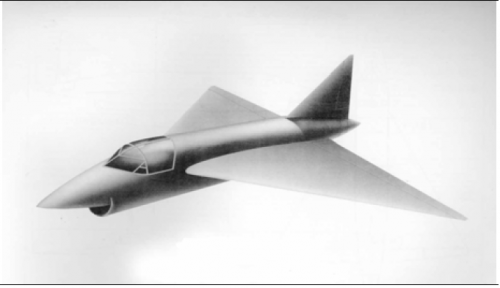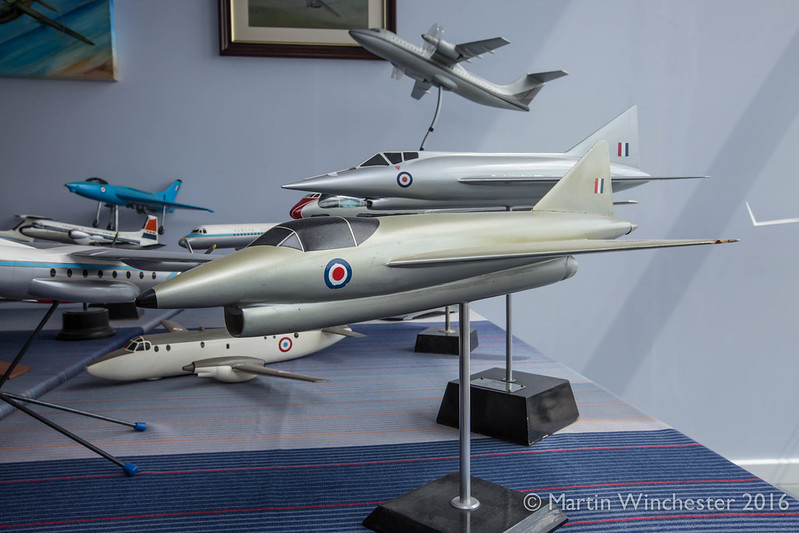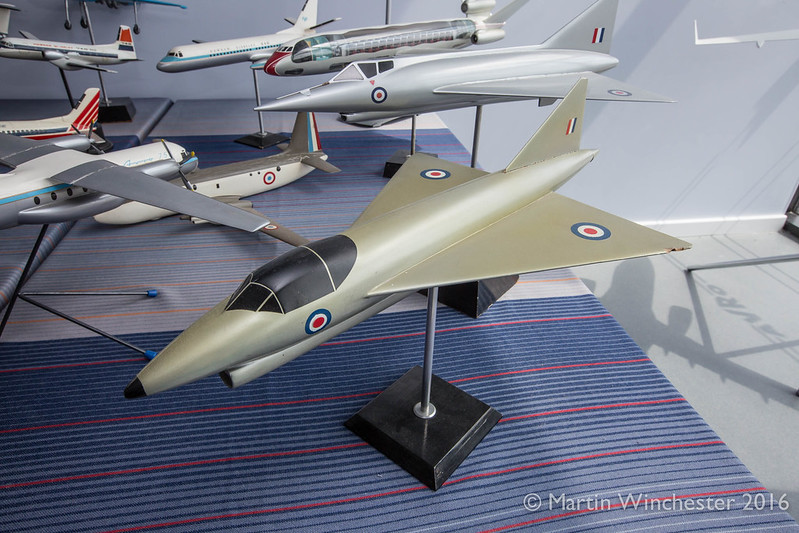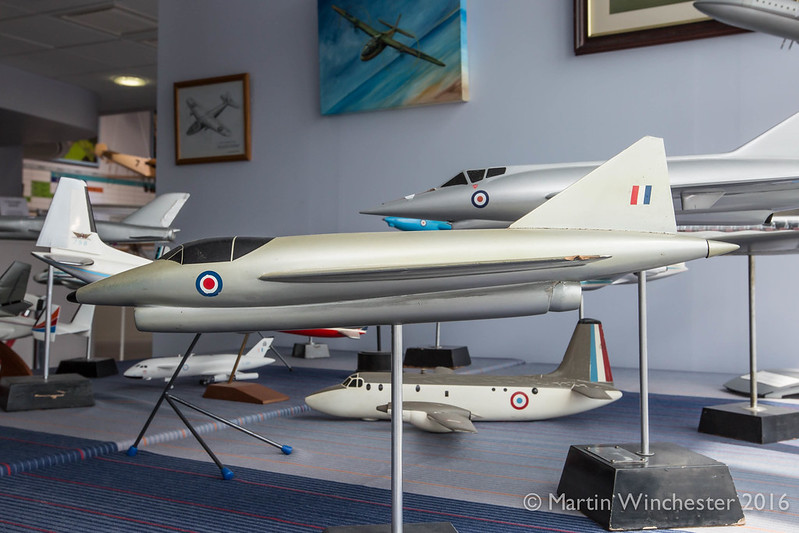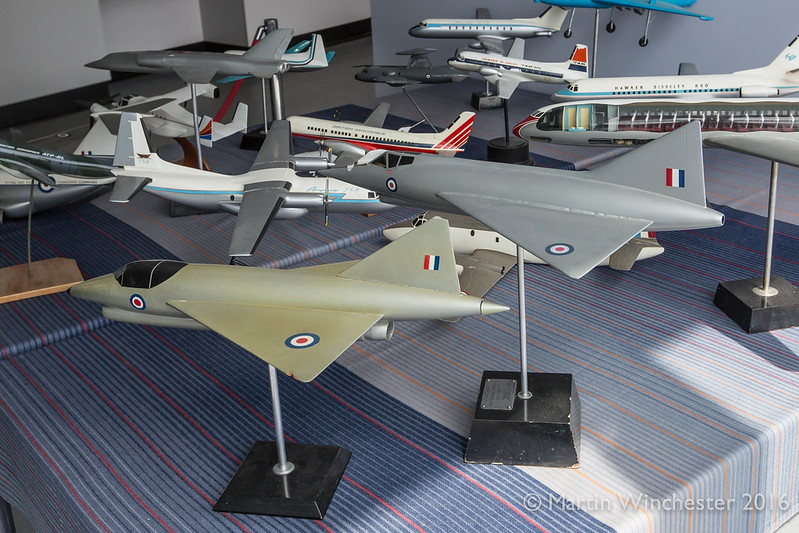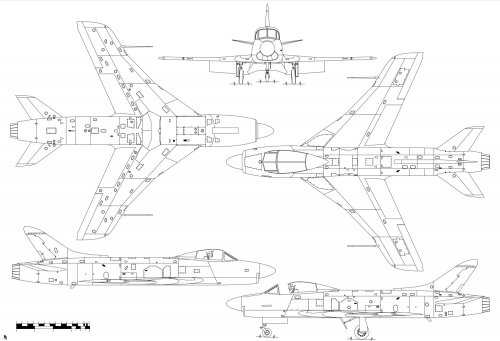- Joined
- 6 September 2006
- Messages
- 4,306
- Reaction score
- 7,424
In 1953 the Air Ministry and the Admiralty issued a joint requirement for a two-seat advanced trainer for operational training at OCUs with fighter-like handling and a maximum speed of Mach 1.0. It was to be armed with a single 30mm ADEN with provision for rockets and bombs and the ability to train pilots on Blue Jay operating procedure. Eventually OR.318 and NA.45 were withdrawn in October 1954 and the Hawker Hunter T.7 was the successor. It was the favoured to meet OR.318 but fell short of the required speed, the P.11 was fasrest but could not meet the endurance requirements, the 725 with the BE.26 failed to meet the requirements but did with the PS.37. Overall the 554 came the closest to meeting all the requirements.
The four submissions to meet OR.318 were:
Avro 725 based on the Avro 720
English Electric P.11 based on the P.1B
Hawker P.1101 based on the Hunter
Supermarine Vickers Type 554 based on the Type 545 Developed Swift
The following data comes from the Tender Design Studies submitted as quoted in AVIA 54/1189.
Avro 725
With 1x 6,500lb Bristol B.E.26R: 11,472lb AUW; 585kts (M 1.02) at 40,000ft; 720 gals fuel; 1,100nm range with external fuel; 48,000ft service ceiling; 7.3 mins to 45,000ft; 1800yds TO to 50ft; 1560yds landing from 50ft
With 1x 10,750lb de Havilland PS.37: 16,030lb AUW; 660kts (M 1.15) at 40,000ft; 720 gals fuel; 1,100nm range with external fuel; 52,000ft service ceiling; 5.5 mins to 50,000ft; 1300yds TO to 50ft; 1650yds landing from 50ft
English Electric P.11
28,658lb AUW; 1x 14,000lb RR Avon RA.24R; 1155kts (M 2.0) at 40,000ft; 600 gals fuel + 250 in slipper tank; 1,100nm range with external fuel; 49,000ft service ceiling (no reheat), 53,000ft (with reheat); 6.0 mins to 50,000ft; 1600yds TO to 50ft; 2100yds landing from 50ft
Hawker P.1101
16,613lb AUW; 1x 10,500lb RR Avon RA.23; 530kts (M 0.92) at 40,000ft; 420 gals fuel; 1,100nm range with external fuel; 47,000ft service ceiling; 11 mins to 50,000ft; 1400yds TO to 50ft; 1500yds landing from 50ft
Supermarine Type 554
With 1x 17,500lb RR Avon RA.19R: 22,010lb AUW; 575kts (M 1.0) at 40,000ft; 690 gals fuel; 1,200nm range with external fuel; 53,500ft service ceiling; 5.5 mins to 50,000ft; 1750yds TO to 50ft; 1700yds landing from 50ft
With 1x 21,750lb RR Avon RB.106R: 26,000lb AUW; 690kts (M 1.2) at 40,000ft; 820 gals fuel; 1,200nm range with external fuel; 56,500ft service ceiling; 4.0 mins to 50,000ft; 1600yds TO to 50ft; 1800yds landing from 50ft
The four submissions to meet OR.318 were:
Avro 725 based on the Avro 720
English Electric P.11 based on the P.1B
Hawker P.1101 based on the Hunter
Supermarine Vickers Type 554 based on the Type 545 Developed Swift
The following data comes from the Tender Design Studies submitted as quoted in AVIA 54/1189.
Avro 725
With 1x 6,500lb Bristol B.E.26R: 11,472lb AUW; 585kts (M 1.02) at 40,000ft; 720 gals fuel; 1,100nm range with external fuel; 48,000ft service ceiling; 7.3 mins to 45,000ft; 1800yds TO to 50ft; 1560yds landing from 50ft
With 1x 10,750lb de Havilland PS.37: 16,030lb AUW; 660kts (M 1.15) at 40,000ft; 720 gals fuel; 1,100nm range with external fuel; 52,000ft service ceiling; 5.5 mins to 50,000ft; 1300yds TO to 50ft; 1650yds landing from 50ft
English Electric P.11
28,658lb AUW; 1x 14,000lb RR Avon RA.24R; 1155kts (M 2.0) at 40,000ft; 600 gals fuel + 250 in slipper tank; 1,100nm range with external fuel; 49,000ft service ceiling (no reheat), 53,000ft (with reheat); 6.0 mins to 50,000ft; 1600yds TO to 50ft; 2100yds landing from 50ft
Hawker P.1101
16,613lb AUW; 1x 10,500lb RR Avon RA.23; 530kts (M 0.92) at 40,000ft; 420 gals fuel; 1,100nm range with external fuel; 47,000ft service ceiling; 11 mins to 50,000ft; 1400yds TO to 50ft; 1500yds landing from 50ft
Supermarine Type 554
With 1x 17,500lb RR Avon RA.19R: 22,010lb AUW; 575kts (M 1.0) at 40,000ft; 690 gals fuel; 1,200nm range with external fuel; 53,500ft service ceiling; 5.5 mins to 50,000ft; 1750yds TO to 50ft; 1700yds landing from 50ft
With 1x 21,750lb RR Avon RB.106R: 26,000lb AUW; 690kts (M 1.2) at 40,000ft; 820 gals fuel; 1,200nm range with external fuel; 56,500ft service ceiling; 4.0 mins to 50,000ft; 1600yds TO to 50ft; 1800yds landing from 50ft

